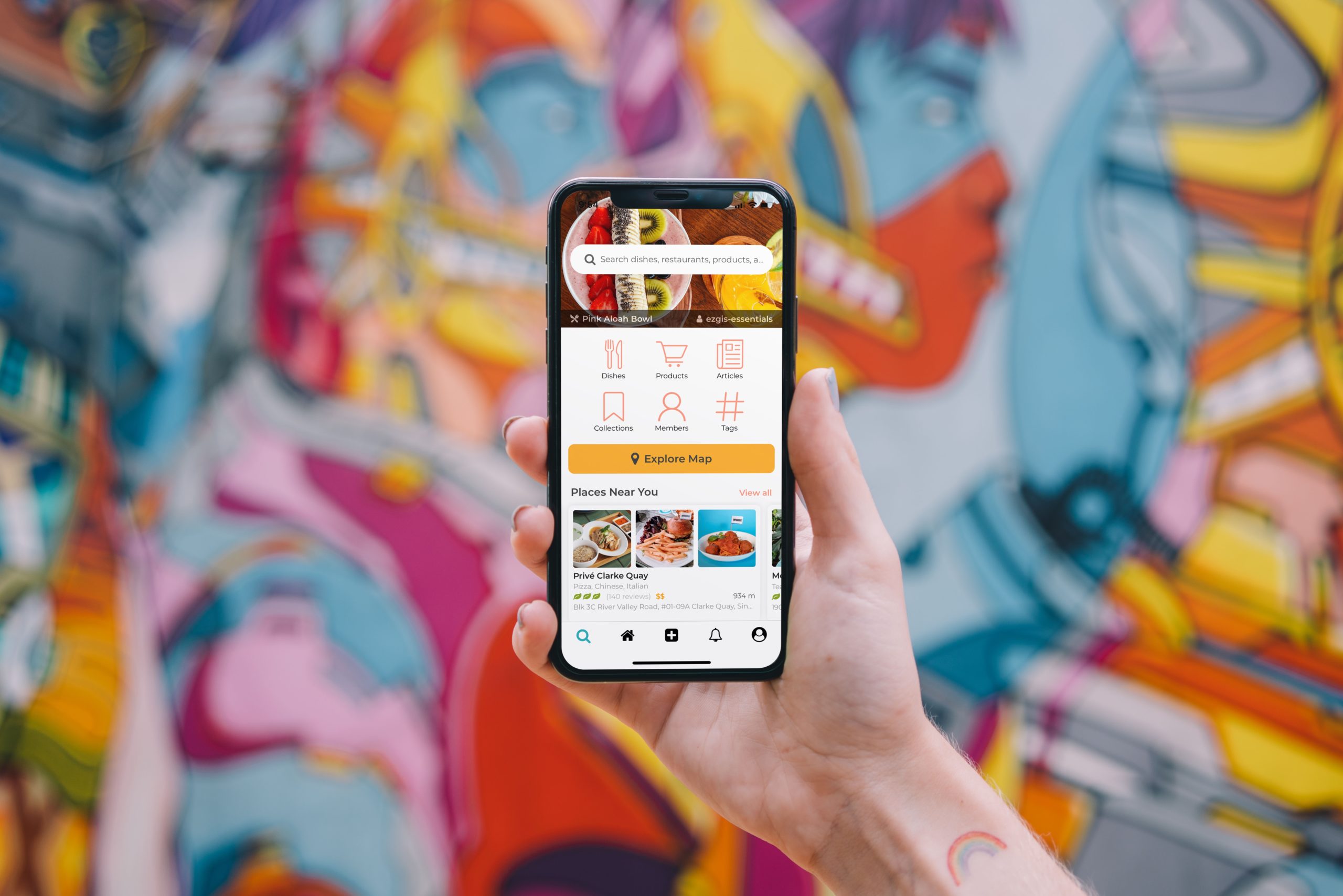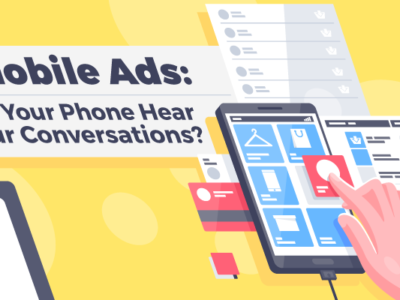Do you know how much time an average internet user spends using their apps? It’s almost three hours! This stat is good enough to make any marketer lick their lips as there’s no other medium where you get such attention. That’s why mobile apps have emerged as one of the most sought after marketing tools for marketers.
Mobile apps are among the most efficient channels for advertisers to get consumers’ attention. It’s no surprise that mobile advertising reached unprecedented heights in 2021, with $295 million spent. They’ve also predicted that 2022 will see advertising spend reaching the $350 million mark.
What is In-App Advertising?
In-app advertising is a marketing method companies use to display their ads in mobile apps as users spend a good amount of their time using various mobile apps. Mobile games, social media sites, and streaming apps are the most popular types of applications when it comes to advertising.
Mobile app developers get paid by advertising, which helps them keep their content free and drive downloads. Advertisers get an opportunity to showcase their products or services to users. And the users get to enjoy free content. It’s a win-win for everyone!
Various Formats of In-App Advertising
In-app advertisements can be delivered in various formats that depend on the nature of the app, product/service, and users. Let’s see different types of ad formats used for in-app advertising.
Banner Ads
They are basic and static advertisements that appear either at the upper or lower part of the application. They are very affordable, and they are universally supported.
Video ads
Native video ads are delivered in mobile video format and could allow users to skip the video for a short time if they don’t want to watch it. Mobile video ads are an excellent way to interact with viewers.
Playable ads
These ads give users a playable or gamified experience.
Rewarded video ads
Mostly used in games, this format, like the name suggests, offers rewards to gamers who watch videos.
Full-screen ads
The format of this ad is full-screen banner ads that are displayed while users are playing games or using the app.
Native ads
As the name suggests, these ads are showcased as a part of the content in social media apps. For example, you might come across ads with a ‘Sponsored’ tag on Facebook or Instagram. These ads can be an effective app marketing tool as the users come across them as a part of their news feed.
How Does In-App Advertising Work?
If you want to get started with in-app advertising, here’s what you need to do!
1. Choose an Ad Network
Mobile ads are offered via a mobile advertising network, a service that connects advertisers and developers. Mobile advertising networks function as intermediaries as they connect advertisers with publishers. You can choose various platforms based on ROI, target audience, advertising format, campaign type, etc. Google’s AdMob is one of the most widely used mobile advertising networks.
2. Select the Ad Format
You’ll need to choose the right ad format that suits your goals and target audience.
A lot of the success of your marketing campaign will depend on the kind of ad format you choose. You can go for formats such as banner and short video ads if the volume is high and you want to avoid much complications, although you’ll need to design them in the best possible way.
However, if you want to target a particular audience that spends a good time around gaming, you could go with rewards and game-based ads. These ads will take time for customization but yield a higher ROI compared to the rest.
The third category of ads is the most generic and most used one: native ads. Platforms such as Instagram, Facebook, Twitter, and TikTok are preferred platforms as all of us spend a good amount of day scrolling through the timelines.
The ad format you choose will mainly depend on your target audience and resources. Once you select the right ad format, you must execute it well enough to make the best out of it.
3. Choose an Ad Pricing Model
There are various types of pricing models when it comes to in-app advertising. We’ll learn about it in the next section.
In-app Advertising pricing models
Let’s see the different pricing models you could select for in-app advertising.
Cost Per Mille (CPM)
CPM is used when a publisher charges an advertiser for every 1,000 times that the advertisement is shown.
Cost per Click (CPC)
In the CPC price model, advertisers pay to the advertiser only when an advertisement is clicked.
Cost Per Action (CPA)
A CPA pricing system requires advertisers to pay the publisher whenever the click results in a certain, pre-defined action within an application. The action could be a registration, purchase, etc.
Cost Per Install (CPI)
As the name suggests, this pricing method requires advertisers to pay only if the actions result in an installation.
Benefits & Challenges of In-App Advertising
Accurate targeting
When a mobile device user is surfing websites, cookies are the only source of customer data for publishers and advertisers. This information tends to be inaccurate. When it comes to in-app advertising, they can collect more specific data through the device ID, including the user’s age, their internet provider gender, gender operating system, device type, location, and much more.
More Personalization
In-app mobile advertising allows advertisers to make highly personal and personalized advertisements with a greater chance of attracting their target audience and persuading them to click.
Higher ROI
Compared to web-based advertisements, in-app ads generate almost double the number of clicks. According to Medialets, the CTR of ads in-app is approximately 0.58 percent. This is significantly higher than that of web-based ads, which have 0.23 percent of CTR.
High Audience Engagement
The mobile app user is the more attentive and thus is the perfect target audience for advertising on display as it results in more interest, higher conversions, and click-through rates.
Monetization Models
Mobile app ads offer advertisers and publishers to work on different pricing models compared to web advertising. This flexibility is a win-win for all parties involved.
Tips to Create an Impactful In-App Advertising
Create advertisements that are creative and grab attention
Ask yourself how long it takes for you to skip ads while using apps. Well, that’s what you’re up against. The quality of your ad is the most important thing as users make decisions in microseconds.
Choose mobile ad networks carefully based on your goals and target audience
There are various ad networks that specialize in certain types of ads and target people in particular countries. Thus, it must be one of the primary considerations to choose the right ad network that fits your needs.
Run full-screen ads as they’re more effective than other types of ads
It’s been studied that the full-screen ads yield a higher CTR compared to other forms. This happens as it is the only thing on screen and doesn’t get a user’s attention divided.
Experiment with different ads and apps to see which one works the best
Trial and error is the game that you’ll have to familiarize yourself with while you run in-app ads. Don’t get too jubilant or disappointed by seeing results as you’ll only get the best results once you know what works and what doesn’t. Plus, you must keep on optimizing the ads to achieve the maximum out of it.
Run rewarded video ads to achieve higher conversion rates
Reward-based video ads could be an ideal option as there’s an added incentive for the users to watch your ad. To avoid them doing out of compulsion, you must ensure that you’re hitting the right audience with it. Otherwise there’s no point in all the views you get.
Final Words
Whether you’re a publisher or an advertiser, in-app advertising is a great opportunity. The advertiser gets a great way to market their offerings, and the app developers get the opportunity to monetize. However, you need to make sure that you’re leveraging them in the right way to make the most out of your investments. Partnering with an advertising agency in the Philippines can help ensure you navigate these challenges effectively and maximize your ROI.
The world of in-app advertising is dynamic, and changes are the only constant. Thus, you must measure the impact vis-a-vis your investments and keep optimizing your campaigns. That’s the only way to succeed in the world of in-app advertising.







